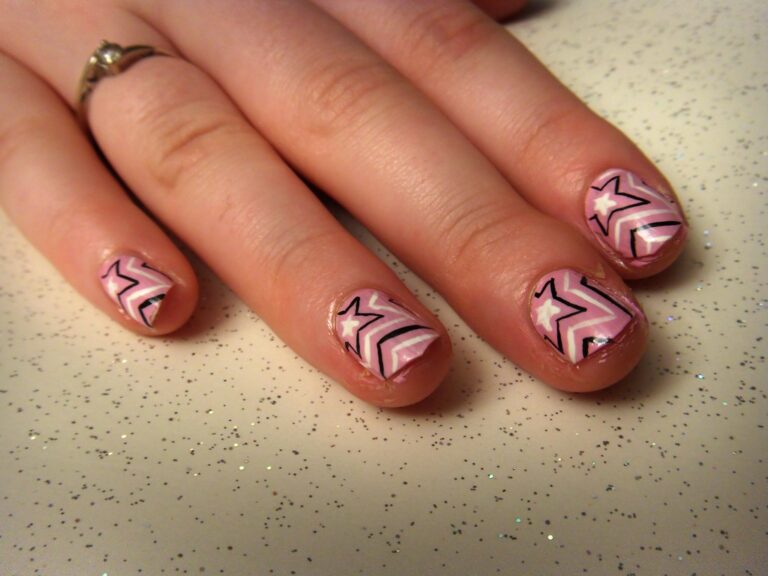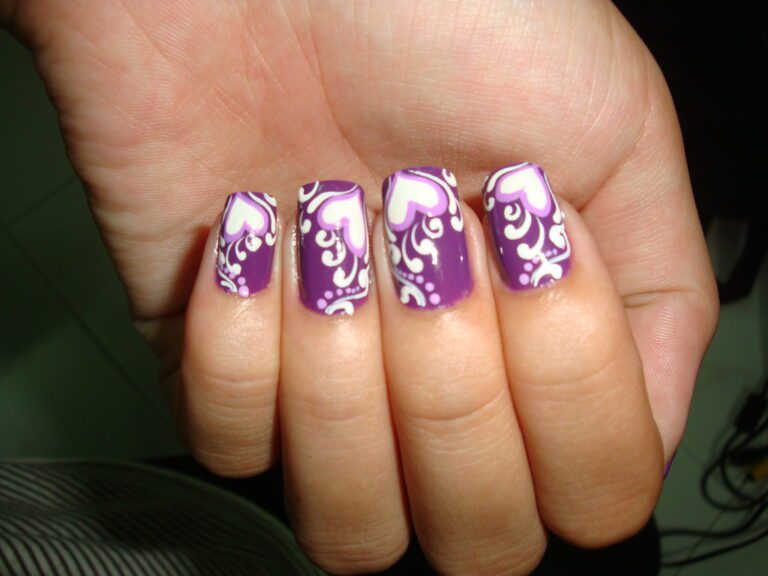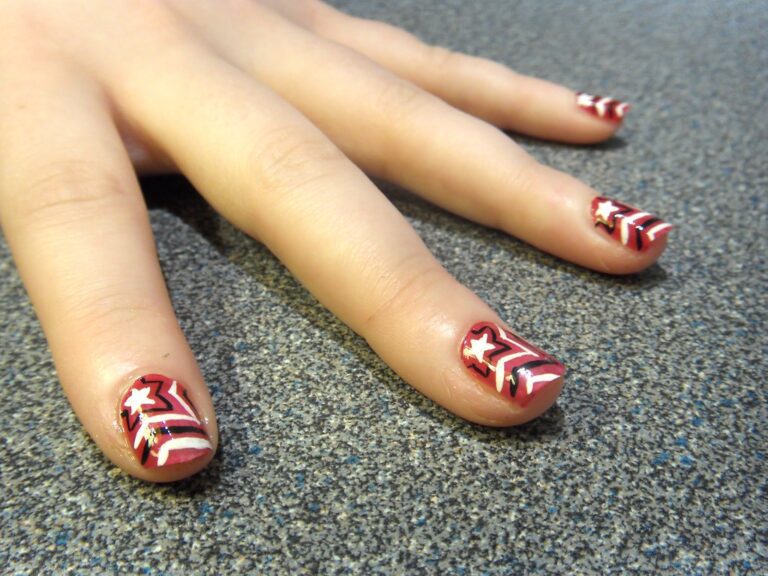“Health Reflections: How Nails Reflect Health”
In this article, we explore the intriguing connection between nail health and overall well-being. Nails are often an overlooked indicator of our internal health, and their appearance can reveal important insights about our nutritional status, systemic diseases, and common nail conditions. Understanding the significance of nail health can empower us to take proactive steps towards maintaining our overall health and well-being.
Key Takeaways
- Regularly inspecting your nails can provide valuable clues about your overall health and well-being.
- Nail discoloration, texture changes, and abnormalities may indicate underlying health issues that require attention.
- Maintaining good nail hygiene and choosing the right products are essential for healthy nails and overall well-being.
- Seeking professional care for persistent nail issues is important to address potential health concerns.
- Being mindful of systemic diseases that can manifest in nail changes can aid in early detection and management of health conditions.
The Window to Your Health: What Nails Can Indicate

Nutritional Deficiencies Revealed by Nail Health
Nutritional deficiencies can have a significant impact on the health and appearance of your nails. Brittle or cracked nails, for example, may indicate a lack of essential vitamins and minerals such as iron, biotin, and calcium. These deficiencies can lead to weakened nail structure and increased susceptibility to damage. It’s important to address nutritional deficiencies promptly to maintain healthy nail growth and strength.
Additionally, vitamin deficiency nails are often caused by a lack of nutrients in the body or underlying medical conditions. Understanding the signs of nutrient deficiency in nails is crucial for identifying potential health issues and taking appropriate measures to address them.
To ensure optimal nail health, it’s essential to maintain a balanced diet rich in essential nutrients and vitamins. Consulting a healthcare professional can provide valuable insights into addressing specific nutritional deficiencies and promoting overall nail wellness.
Nail Discoloration and What It Signals
Nail discoloration is often more than a cosmetic issue; it can be a sign of underlying health conditions. Yellowing nails may indicate the presence of a fungal infection or, less commonly, chronic bronchitis. Dark streaks or painful growths could signal melanoma, a serious form of skin cancer. While white spots are typically harmless and related to minor injuries, persistent white lines or patches could suggest liver disease, such as hepatitis.
Here’s a quick guide to what different nail colors might mean:
- Yellow: Fungal infection, chronic respiratory disease
- Brown/Black: Melanoma, injury, or psoriasis
- White: Minor injury, fungal infection, or liver disease
- Green: Bacterial infection
- Blue: Circulatory issues
Tip: Sudden or severe changes in nail color should prompt a visit to a healthcare provider to rule out serious conditions.
It’s important to note that while some nail discoloration is temporary and benign, other changes can be chronic and indicative of systemic health issues. Proper nail care and hygiene can prevent some discoloration, but persistent or unexplained changes warrant professional evaluation.
The Link Between Nail Texture and Disease
The texture of your nails can be a subtle yet telling indicator of your overall health. Changes in nail texture, such as ridges, brittleness, or unusual thickness, can sometimes point to underlying health issues. For instance, brittle nails may suggest thyroid problems or iron deficiency anemia, while horizontal ridges, known as Beau’s lines, could indicate severe stress to the body, such as from illness or injury.
Beau’s lines, specifically, are worth paying attention to as they can reflect the timing of the stress or illness based on their position on the nail. Here’s a quick guide to understanding what different nail textures might signify:
- Ridges: Can be age-related or indicate stress, iron deficiency, or inflammatory arthritis.
- Brittleness: Often associated with thyroid issues, malnutrition, or long-term exposure to chemicals or detergents.
- Pitting: Small depressions on the nail surface may be seen in psoriasis or alopecia areata.
- Clubbing: Rounded, swollen nail ends can signal lung, heart, or gastrointestinal diseases.
Tip: Consistent observation of your nails can be key in early detection of health issues. If you notice persistent changes in texture, it’s advisable to consult a healthcare professional.
Common Nail Conditions and Their Health Implications

Fungal Infections: More Than Just an Aesthetic Concern
Fungal nail infections, medically known as onychomycosis, are often dismissed as mere cosmetic issues. However, they can be indicative of deeper health problems, especially in individuals with compromised immune systems. These infections are caused by various fungi, with dermatophytes being the most common culprits.
Effective management of fungal infections is crucial, not only for the appearance of the nails but also for overall health. Treatment can be lengthy and requires patience, as the infection resides under the nail, which is a barrier to many treatments. Here are some steps to manage and prevent fungal nail infections:
- Keep nails clean and dry to prevent fungal growth.
- Trim nails straight across and file down thickened areas.
- Wear breathable footwear and change socks regularly.
- Avoid walking barefoot in communal areas such as gyms and pools.
Tip: If over-the-counter treatments are ineffective, it is important to seek professional care, as prescription medications may be necessary.
Psoriasis and Other Skin Conditions Reflected in Nails
Psoriasis is a chronic skin condition that can affect the nails, causing changes in nail color, texture, and shape. The nails may become pitted, ridged, or discolored, and in severe cases, they may even detach from the nail bed. It’s important to note that nail psoriasis and nail eczema are distinct conditions, each with its own characteristic effects on the nails. Understanding these differences is crucial for accurate diagnosis and effective treatment. Additionally, maintaining good nail hygiene and seeking professional care can help manage the impact of psoriasis on nail health.
The Significance of Nail Pitting and Grooves
Nail pitting and grooves are often overlooked as mere cosmetic issues, but they can be indicative of deeper health concerns. Nail pitting typically appears as small depressions on the nail surface and can be a sign of psoriasis or connective tissue disorders. Similarly, grooves, or Beau’s lines, may develop due to severe illness or nutritional deficiencies.
Identifying the cause of these nail abnormalities is crucial for appropriate treatment. For instance, pitting associated with psoriatic arthritis may require systemic medication to reduce inflammation. On the other hand, grooves caused by malnutrition might necessitate dietary adjustments.
Tip: Regular monitoring of nail changes can aid in early detection of potential health issues. If you notice persistent or worsening nail pitting and grooves, it’s advisable to consult a healthcare professional.
It’s important to differentiate between normal variations in nail texture and those that warrant medical attention. A comprehensive evaluation by a dermatologist or other healthcare provider can help determine the underlying cause and guide the management of these nail conditions.
Systemic Diseases Mirrored in Nail Appearance

Nail Changes Associated with Diabetes
Individuals with diabetes may notice various changes in their nail condition, which can serve as early warning signs of the disease’s progression. For instance, nail fungus is more common in people with diabetes due to the reduced blood circulation and immune response. This can lead to discolored, thickened, or brittle nails. Additionally, a condition known as onychomycosis is prevalent among diabetics, characterized by fungal infection of the nails.
Another concern is the development of yellow nails, which can indicate the presence of glucose in the nail bed. Diabetic patients may also experience slower nail growth and are more susceptible to infections around the nail bed. It is crucial for individuals with diabetes to monitor their nail health and seek medical advice if they notice any concerning changes.
Tip: Regular inspection of the nails for any abnormalities can be a simple yet effective way to keep track of one’s health, especially for those managing diabetes.
Heart Disease and Nail Bed Alterations
Nail bed alterations, such as changes in vascularity and color, can provide valuable insights into the presence of underlying systemic diseases. These alterations, often observed in conditions like heart failure, can manifest as changes in the lunula and nail plate. Understanding these subtle changes can aid in the early detection and management of cardiovascular health. It’s important to note that nail bed alterations should be interpreted in conjunction with other clinical signs and symptoms for a comprehensive assessment of heart health.
Lung Conditions and Nail Clubbing
Nail clubbing, also known as digital clubbing, is a condition characterized by the thickening of the fingertips and the abnormal curvature of the nails. It is often associated with chronic lung conditions such as bronchiectasis, lung infections, and lung cancer. The severity of nail clubbing can vary, and it is important to monitor any changes in nail structure as it may indicate underlying respiratory issues. In some cases, nail clubbing can be a symptom of serious lung diseases, requiring prompt medical attention. If you notice persistent nail clubbing, consult a healthcare professional for a thorough evaluation and diagnosis.
Nail clubbing is commonly linked to health conditions that affect oxygen levels in the blood, including heart defects and lung disorders. It is crucial to recognize nail clubbing as a potential indicator of respiratory health and seek appropriate medical care when necessary.
If you experience nail clubbing along with symptoms such as coughing up blood, chest pain, or difficulty breathing, it is essential to seek immediate medical assistance. Early detection and management of underlying lung conditions can significantly impact long-term health outcomes.
Nail Care: Best Practices for Healthy Nails

The Dos and Don’ts of Nail Hygiene
When it comes to nail hygiene, it’s essential to follow the best practices to maintain healthy and beautiful nails. Regular cleaning is crucial for preventing bacterial infections, and moisturizing is equally important as nails crave hydration just like our skin. Additionally, using a nail clipper or nail scissors to trim nails is recommended. When cutting fingernails, it’s best to cut them almost straight across and round a little at the corners to keep the nails strong. For toenails, a similar straight-across cut is advised. Implementing these practices will contribute to the overall health and strength of your nails. Remember, healthy nails are an indicator of overall well-being and should not be overlooked.
Choosing the Right Products for Nail Health
Selecting the appropriate products for nail care is crucial for maintaining healthy nails. The market is flooded with various nail care items, but not all are created equal. It’s essential to choose products that are not only effective but also gentle on your nails. Look for nourishing ingredients like biotin, keratin, and vitamin E, which are known to strengthen and protect nails.
When it comes to nail polish, opt for formulas that are free from harsh chemicals such as formaldehyde, toluene, and dibutyl phthalate (DBP). These substances can cause brittleness, splitting, and other nail damage. Instead, select polishes that promote nail health, offering both beauty and care.
Tip: Always read labels carefully and consider choosing products that are cruelty-free and have a good reputation among users.
Remember, the right nail care routine combined with quality products can lead to stronger, healthier nails. Here’s a simple list to help you start:
- Nourishing nail cream or oil
- Gentle, acetone-free nail polish remover
- Hydrating cuticle oil
- Protective base and top coat
By adhering to these guidelines, you can ensure that your nails remain in top condition, reflecting the care you put into selecting the best products for them.
When to Seek Professional Care for Nail Issues
While many nail conditions can be managed with good hygiene and over-the-counter treatments, certain symptoms should prompt a visit to a healthcare professional. Persistent changes in nail color, texture, or shape may indicate underlying health issues that require medical attention. It’s essential to recognize when self-care is insufficient and professional evaluation is necessary.
- Consult a healthcare provider if you notice persistent or severe nail ridges.
- Seek immediate care for painful or severe ingrown nails.
- Unusual nail discoloration, such as persistent white spots or yellowing, could signal an infection or other health concerns.
Tip: Early detection and treatment of nail problems can prevent more serious health complications. Don’t hesitate to seek professional advice if you’re unsure about the condition of your nails.
When it comes to nail care, following the best practices is essential for maintaining healthy and beautiful nails. At NAILinspire.com, we are dedicated to providing the ultimate online nail art design library, where you can explore a wide range of nail care tips, tutorials, and inspiration. Whether you’re a nail enthusiast or a professional nail artist, our website is your go-to destination for all things nails. Visit NAILinspire.com today to discover the latest trends, techniques, and products to keep your nails looking their best.
Frequently Asked Questions
How are nails related to overall health?
Nails can indicate various health conditions and nutritional deficiencies, making them a window to overall health.
What are some common nutritional deficiencies revealed by nail health?
Nutritional deficiencies such as iron deficiency, vitamin B12 deficiency, and protein deficiency can be reflected in nail health.
What does nail discoloration indicate?
Nail discoloration can indicate various health issues, including liver problems, fungal infections, or circulation issues.
How is nail texture linked to disease?
Nail texture can provide clues about underlying diseases such as psoriasis, eczema, and autoimmune disorders.
How can fungal infections affect overall health?
Fungal infections in nails can spread to other parts of the body and may indicate compromised immune function.
When should I seek professional care for nail issues?
It is advisable to seek professional care for persistent nail problems, sudden changes in nail health, or signs of infection.






